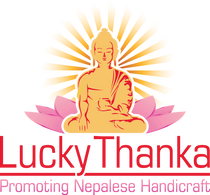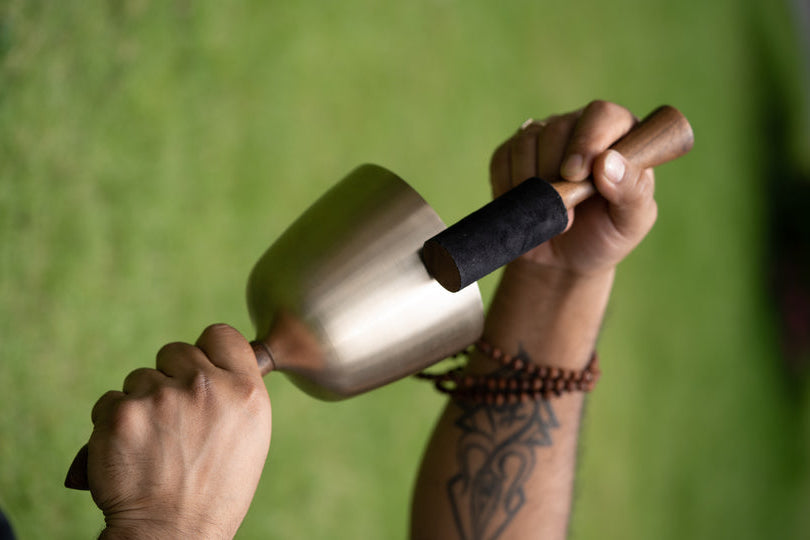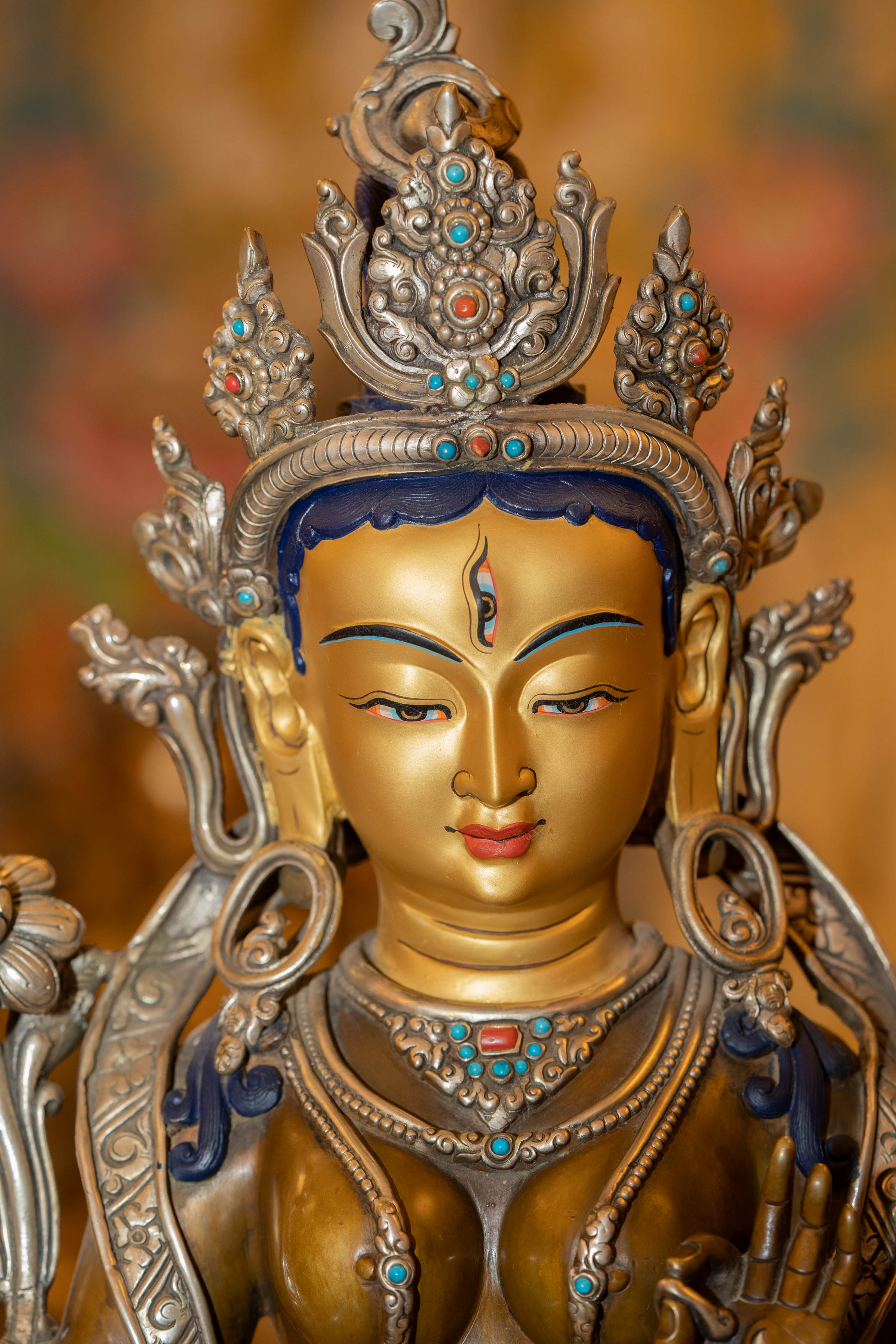How is Tibetan thangka painted?

1. GENERATING A PURE MOTIVE
In old Tibet, a thangka was the fruit of a sacred human trio: a lama, a religious practitioner and a thangka artist. The practitioner, having sought the counsel of a qualified Buddhist lama, learned which deity image of the Tibetan pantheon was most beneficial for his or her spiritual practice. He or she then invited a thangka painter to his or her home and hosted the artist with the best possible hospitality for the duration of the painting process. If the requested deity was especially difficult or unusual, the artist consulted with the lama to clarify aspects of the image.
In order that the finished thangka be worthy of the practitioner's heartfelt devotion, offering and meditation practice, the thangka painter generated a pure intention free of all selfish motives and undertook the task with a joyful mind. There was no discussion of price when the order was placed, and the thangka was not considered a mere commodity bus as a living expression of enlightened energy.
The practitioner must be willing to be patient and refrain from rushing the artist. The combined energy generated by the realized lama, the devout practitioner and the concentrated artist renders the finished thangka particularly sacred. In modern times, it has become necessary to set prices for thangkas, but in old Tibet an artist was paid whatever the practitioner could afford or felt was appropriate. The artist felt grateful and happy regardless of the size or quality of payment.

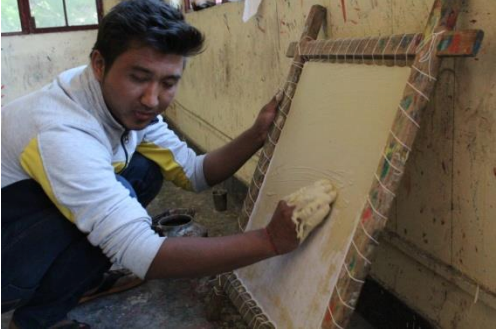
Canvas Preparation
The cloth to be painted undergoes a complex process of preparation which takes between 14 to 20 days depending on local climatic conditions. In India's foggy Himalayan foothills, canvasses for the whole year must be made in the dry months of March, April, October and November. If a canvas is improperly prepared, the entire thangka will be a failure.
First, the cloth is carefully sewn onto four lengths of bamboo which are tightly strung to a large wooden frame. The artist then spreads a cost of glue over the whole canvas and leaves it to dry. He stirs up a mixture of white clay, water and glue in a clean pot to the consistency of thick cream. Blessed medicines or other sacred substances are added if available. The mixture is then strained through fine gauze to remove any impurities and applied evenly to the dry canvas.
When this second coat has dried, the canvas is held up to the light and the areas which have not been evenly coated are patched up with more of the clay mixture and again left to dry. This process is repeated 8-10 times until the entire canvas is evenly coated.
The canvas is then laid upon a smooth wooden board and a small area is moistened with water using a soft white cloth. Section by section, the artist vigorously rubs the canvas smooth with a piece of white marble, moistening it with water as he works. This takes about an hour. The entire canvas is then slowly are carefully stretched by tightening the strings tied to the frame and left to dry in indirect sun.
Once dry, the entire procedure is repeated for the other side of the canvas, stretching it after each moistening and leaving it to dry. When it has been thoroughly treated and dried, the canvas should be so tightly stretched that it makes a nice drum sound when tapped. This is the sign it is ready to be painted. The front of the canvas is then polished with a conch shell.

3. FOUNDATIONAL LINE DRAWING
At this stage the artist bathes, takes purification vows at dawn, meditates upon his tutelary deity, and performs rituals to clear away obstacles and harmful spirits. Having studied the description of the image to be painted in a religious text and consulted a lama about any confusing details, the artist recites the sacred syllables of the Buddha or deity in question and begins to draw.
Ideally, the artist recites these syllables and visualizes the deity for the full duration of the creation of the thangka. If this is done in a genuine way, the thangka is very different from an ordinary work of modern art and is inherently highly sacred. The foundational lines are done in pencil (followed by black ink in old Tibet) and take between 10 to 30 days to complete, depending on the size and complexity of the thangka.
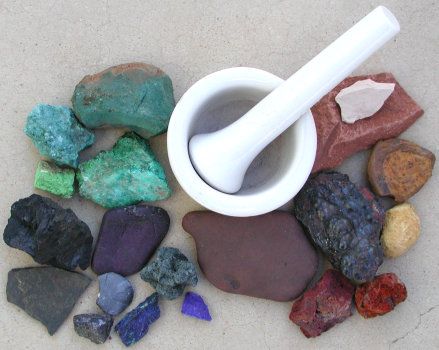
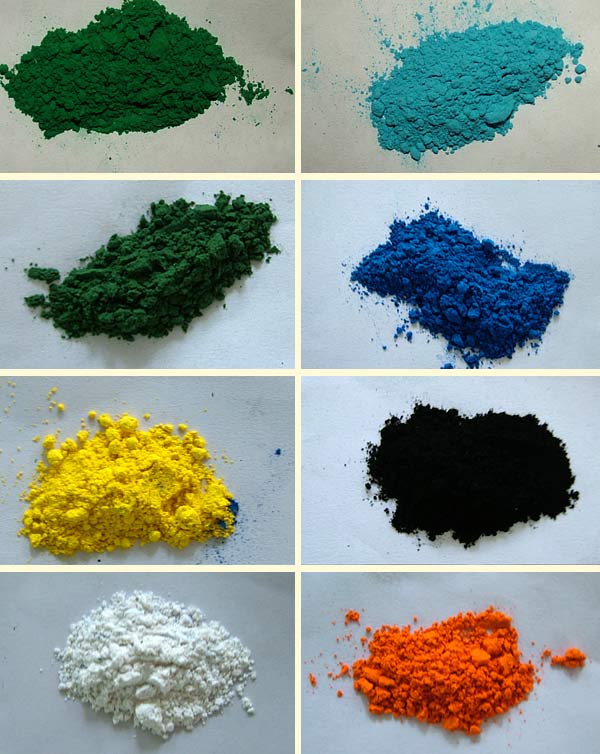
4. MIXING PAINT
Pair text with an image to give customers insight into your brand. Tell a storIt takes a full day to prepare the five primary colors. Traditionally, the materials included a variety of mineral and vegetable substances: minerals, precious stones, bark, leaves, flowers (especially the rock rose), gold, silver, copper, etc. Each had to be collected from its source in different areas of Tibet, cleaned, ground, powered, crushed or cooked.

Paint Brush Making
Traditional paintbrushes were made out of several different materials. For painting on rough surfaces, brushes were made out of Nama grass, a tough grass growing along riverbanks. For medium soft brushes, the hair of horses' tails was uses. For soft brushes of any size, the tufts of hair growing above goats' hooves, the fine hair inside cows' ears, the fur of otters, the very soft feathers of mountain songbirds, and the fur of brown and black cats (especially in India where the other hair and fur is not available) are perfect for painting.
It takes 3 to 4 days to make about 20 high quality brushes. The handle of the brush is a slender piece of upward growing bamboo cut just above the joint. One inch long hair clipped from the animal has to be carefully mixed with powder and sorted to find the hairs that resemble a needle in shape. These are carefully extracted and laid side by side perfectly evenly.
Then they are very carefully inserted into the bamboo in such a way that all the hairs lie together in a cone shaped point. They are seized in between the fingertips and dunked into glue. The bamboo is also dunked in the glue, and the hair is then inserted into the bamboo. Each hair must be perfectly in place. Then a string is carefully tied around the bamboo, not too tight and not too loose. The brushes are then left to dry.

6. Painting
There is a definite, specific sequence to color application. In general, the thangka is painted from top to bottom. The first step is the sky, which takes 3 to 6 days. An initial deep blue wash is followed by innumerable slender, length wise brush strokes to produce a stipple effect of lines. Then all the blue parts of the thangka (water, clothing, etc.) are filled in.
The dark green landscape and all the dark green areas are next. This is followed by light blue, then light green, red, orange, pink, brown, pale orange, yellow, pale yellow and finally white. When the whole series of base coat colors have been applied and allowed to dry, the thangka is scraped with a razor blade, held at an arched angle to the cloth, to smooth away any roughness in the paint. The dust is brushed off with a soft cloth or feather.

7. REDRAWING AND SHADING
The original detailed lines of the clouds and flowers which have been covered by paint are redrawn in pencil and traced over in black ink. The artist then shades them with a fine paintbrush. In general, a thangka needs three applications of paint, but flowers require many repeated applications of thin paint to give them their effect of inherent radiance. A single flower may take 3 to 7 days to complete.a

Details
Painting the intricate details of the back and foreground landscape and brocade clothing designs follows the same sequence of color application as above. This takes 18 to 20 days to complete.


9. BODY SHADING AND FINAL PAINTING
The artist then shades in color to give shape to the figure's body and face. The flowers are given a final shading and all the minute background details such as fish, deer, birds, fruit and countless grass blades are painstakingly painted.

10. GOLD APPLICATION
A considerable quantity of gold is used to highlight and give it its final glorious touches. This entails a strenuous, complex process. Preparing the gold takes 7 to 10 days and applying it takes an additional 6 to 25 days. The artist purchases about 50 grams of gold at a time (no more than five grams are applied to a single thangka) and employs a goldsmith to heat, clean and beat it into sheets.
The artist cuts the sheets into tiny pieces and puts them in a mortar with water and grain sized pieces of marble or glass. He grinds the mixture until the bits of marble or glass are mere dust particles. More water is added and the mixture is covered and allowed to stand overnight. By morning, the gold has sunk to the bottom and the milky mix of marble water is dumped off.
This process is repeated with the addition of glue, and each morning for seven days the surface water is poured off. Finally, only glue is added to the gold and this mix is vigorously ground to extract any remaining impurities. The artist then evenly heats a metal sheet over a medium flame. Adding water and a little glue, he drops tiny dollops of gold onto the hot metal.
The water evaporates and the gold hardens into little pellets. A few of these are then dissolved in water, glue and egg white or juice of Sema grass seed. After the gold has been applied to the thangka, it is polished with a fine stone.

11. OPENING THE EYES
This is the most important moment of a thangka artist's work. Before painting the figure's eyes, the artist bathes and makes offerings to the Buddha's body, speech and mind. When the eyes have been painted, seed syllables and prayers are inscribed on the back of the thangka to awaken the image's energy.

12. BROCADE
A final 4 to 6 days elapses while the tailor affixes a brocade frame to the completed thangka.Brocade is just a choice and when customer buys any thangka from Lucky Thanka website then they can request to add a brocade in their thangka for extra additional cost. Alternatively, Customer can just buy a frame from Ikea or a frame shop to insert their thangka in the frame and hang on the wall.
